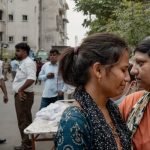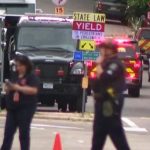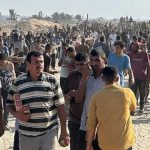Kathmandu: At least 9 people were killed in the latest incidents of firing and arson in the Indian state of Manipur, injuring 10 others.
According to the media reports, an assault on Khamelock village in Imphal East district of Manipur left nine villagers dead and 10 others injured. The attack was allegedly carried out by suspected militants who used automatic weapons and targeted the villagers without discrimination.
The Superintendent of Police in Imphal East said that the incident took place at around 10.30 pm on Tuesday. While Aigijang falls under the Kangpokpi revenue district, it comes under the jurisdiction of Imphal East, lying at the border of these two districts.
Aigijang is a Kuki village. The nine bodies which were recovered were of Meitei men who were not residents of the village. According to police, these were ‘local volunteers’. The victims, who were either asleep or had just finished their dinner, were subjected to a sudden barrage of bullets from the sophisticated firearms wielded by the extremists.
The militants armed with sophisticated weaponry surrounded the village and launched the assault. The injured individuals were promptly transported to various hospitals, and the death toll is expected to rise as several wounded victims are in critical condition.
In response to the ongoing violence, authorities have imposed curfews in 11 out of the 16 districts in Manipur, with limited relaxation hours. Internet services have been suspended throughout the state.
The unrest in Manipur began a month ago with clashes between the Meitei and Kuki communities, resulting in approximately 100 deaths and 310 injuries. The army and paramilitary forces have been deployed to restore peace in the region.
The initial clashes erupted on May 3 after a ‘Tribal Solidarity March’ organized in the hill districts to protest against the Meitei community’s demand for Scheduled Tribe (ST) status.
The Meiteis comprise around 53% of Manipur’s population and mainly reside in the Imphal Valley, while the Nagas and Kukis, both tribal groups, make up about 40% of the population and predominantly inhabit the hill districts.











